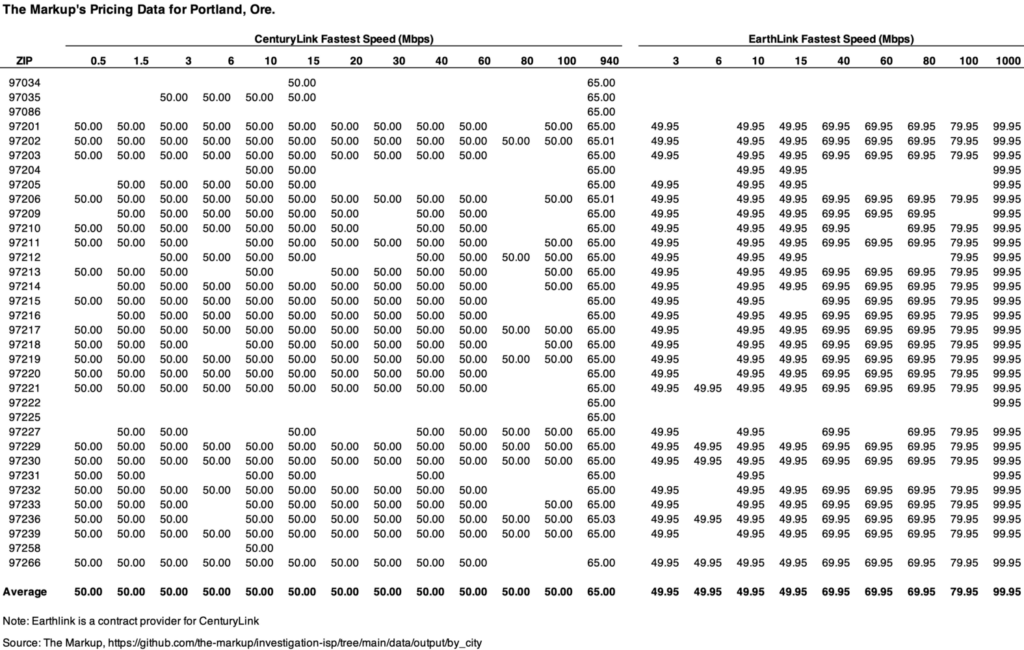
A half-dozen lawsuits have been filed to date challenging the digital-discrimination rules recently approved by the Federal Communications Commission (FCC). These cases were consolidated earlier this month and will now be heard by the 8th U.S. Circuit Court of Appeals.
This has the hallmarks of a significant case that will almost certainly involve the U.S. Supreme Court’s emerging “major questions” doctrine, and likely will also be affected by the Court’s forthcoming decisions in Loper Bright and Relentless. But lurking in the background haunts the spirit of LabMD.
Section 60506 of the Infrastructure Investment and Jobs Act (IIJA) required the FCC to adopt rules “preventing digital discrimination of access based on income level, race, ethnicity, color, religion, or national origin.” The law also required the FCC and the U.S. attorney general to “ensure that Federal policies promote equal access to robust broadband internet access service by prohibiting deployment discrimination.” [emphasis added]
Under this reading, one could be forgiven for concluding that Congress intended the administration to focus narrowly on preventing digital discrimination in deployment policies and practices.
Indeed, soon after the IIJA was enacted, FCC Chair Jessica Rosenworcel announced the formation of a digital-discrimination task force. In the announcement, she indicated “final rules to facilitate equal access to broadband service that prevents digital discrimination and promotes equal access to robust broadband internet access” would be accomplished by “prohibiting deployment discrimination.”
But, as they say in the theater, a funny thing happened on the way to the forum. Instead of focusing on deployment discrimination, the FCC approved sweeping digital-discrimination rules that cover nearly every aspect of broadband service, including speeds, capacities, data caps, credit checks, marketing, and advertising, as well as pricing and discounts.
The FCC’s digital-discrimination order (¶ 105) explicitly includes pricing within the scope of the agency’s rules. Even so, the commission assured the public that this inclusion is “not an attempt to institute rate regulation.” Instead, it claims the agency is merely attempting to facilitate “the equal opportunity to subscribe to an offered service that provides comparable quality of service ‘for comparable terms and conditions’” [emphasis provided by FCC].
The order goes on to argue that pricing is a key term—if not the key term—that consumers consider when choosing a broadband service. As such, the FCC claims authority under the order to “determine whether prices are ‘comparable’ within the meaning of the equal access definition.”
To be fair, most reasonable people would agree that it would be egregious for a provider to intentionally charge a low-income household more for service than a higher-income household for the same service. A disparate-intent standard would readily address such allegations. But the FCC has gone a step further. In addition to a disparate-intent standard, the FCC has adopted a disparate-effects approach.
Under a disparate-effects approach, even if a provider doesn’t intend to discriminate based on income or some other protected class, they could be liable for discrimination if a policy results in different outcomes for protected classes, as described in the FCC’s rules (¶ 39):
[W]here evidence of a statistical disparity is shown to support a complaint of disparate impact, liability is properly limited where (1) the challenged policy or practice is shown to cause the disparity complained about, and (2) business owners are permitted to explain the valid interests served by the challenged policy or practice.
Broadly speaking, this sets up a three-step process to investigate and enforce allegations of discrimination:
- Present evidence of a statistical disparity;
- Investigate whether a particular policy or practice is the cause of the disparity; and
- Investigate whether there are “valid interests served” by the policy or practice (i.e., “technical and economic feasibility” under the IIJA and the FCC’s digital-discrimination rules).
These last two steps amount to costly and time-consuming litigation, with massive discovery served on accused providers, a bevy of experts on each side, and “technical and economic feasibility” standards stacked against the accused.
But the first step—the step that kicks off the costly and time-consuming quasi-judicial administrative proceeding—is trivially easy. It’s especially easy when income is considered a protected class. In an International Center for Law & Economics (ICLE) issue brief, we concluded:
Because … other factors are correlated with income level—and with other protected characteristics—applying an effects-based statistical analysis is likely to produce a false positive concluding the presence of digital discrimination, even when there was an explicit effort to avoid such discrimination. This is a version of Nobel laureate Ronald Coase’s well-known quote: “If you torture the data long enough, it will confess.”
This is not mere speculation. In fact, the FCC’s report and order cites several reports claiming to have found statistical disparities in broadband deployment and pricing. In particular, the FCC seven times cites a report by The Markup claiming to show that—within certain selected localities—AT&T, Verizon, EarthLink, and CenturyLink offered slower connection speeds to lower-income and nonwhite areas for the same price that higher speeds were offered to other parts of the cities surveyed. The authors argued:
By failing to price according to service speed, these companies are demanding some customers pay dramatically higher unit prices for advertised download speed than others.
Without saying so directly, The Markup’s authors imply that these observations amount to discrimination. But to say that there’s been some pushback on The Markup’s data and methodology would be a huge understatement. Even the authors themselves admit that their approach and data could not produce reliable statistical tests:
We purposely did not run statistical tests with p-values because, as advised by statisticians we consulted, we can’t assume independence between addresses’ offers, an assumption required for Student’s t-tests, Chi-squared tests, and z-tests.
Perhaps one reason why the authors couldn’t produce any statistical tests is that there’s actually little variation in the pricing. I downloaded the data for Portland, Oregon—which includes only CenturyLink and Earthlink (the latter is a contract carrier for CenturyLink)—and summarized it by ZIP code. For each provider, there was no variation at all from ZIP code to ZIP code.

With such unreliable data, as well as an unreliable approach, it would be reasonable to conclude that The Markup’s study should be ignored. But under the FCC’s digital-discrimination rules, the agency can use even unreliable studies as a first step to open a full-blown investigation. The FCC says that it “will evaluate all data relevant to a claim of digital discrimination of access on a case-by-case basis, including all Commission and external data sources and studies.” (¶ 167)
Even worse, under the FCC’s expansive definition of “equal opportunity to subscribe” to mean “an offered service that provides comparable quality of service ‘for comparable terms and conditions,’” providers could be accused of discrimination in pricing if the prices do not reflect differences in available speeds. They could also be accused of discrimination in deployment if some parts of town have different ranges of available speeds than other parts of town. It’s an open invitation to the spaghetti approach to litigation—throw a bunch of allegations against the wall and see what sticks.
The California Community Foundation and Digital Equity LA Coalition’s 2022 report on disparities in advertised broadband pricing has been credited with the Los Angeles City Council’s approval of the nation’s first city-level digital-discrimination policy, as well as a pending California State Assembly bill to codify the FCC’s digital-discrimination rules into state law.
The report’s authors claimed to show that Charter’s broadband service (Spectrum) is more expensive and slower in high-poverty neighborhoods in Los Angeles County, while wealthier neighborhoods in the county are offered higher speeds at lower prices. But as with The Markup report, the approach and data provided are unreliable.
For starters, the data sample only 165 addresses in an area with nearly 3.4 million households. Even a simple yes/no survey would require almost 400 observations to produce the standard levels of statistical significance and margin of error. But aside from the sample size problem, the LA study does not demonstrate—even on its own terms—income discrimination or discrimination against a protected class. Instead, the report’s data appear to show that competition is a key factor driving differences in prices throughout the region. For example, for 500 Mbps download speeds:
- Spectrum’s average price is $61.60 when it has no competition from AT&T or Frontier (83 observations),
- Spectrum’s average price is $55.70 when it has competition from either AT&T or Frontier (78 observations),
- Spectrum’s average price is $43.30 when it has competition from both AT&T and Frontier (3 observations).
Again, with such unreliable data and an unreliable approach, it would be reasonable to conclude that the Los Angeles study should be ignored. But under the FCC’s digital-discrimination rules, the agency can use even unreliable studies as a first step to open a full-blown investigation.
It’s been argued that one reason for the variation in Spectrum prices throughout the region may be related to promotions, as noted in NCTA’s comments that:
Charter also extends limited promotional offers based on various market dynamics, including competitive actions and seasonal trends (such as back-to-school).
It could be argued that offering promotions is a reasonable competitive response to rival providers’ offers. But under the FCC’s broad definition of “covered services,” even promotions are subject to digital-discrimination scrutiny. Moreover, it’s not clear that competition from rivals would provide a safe harbor under the FCC’s onerous “technical and economic feasibility” provisions.
With its promise to consider all “external data sources and studies” alleging digital discrimination, the FCC has sent out an open invitation to flood the field with schlocky studies to trigger an investigation. Anyone who’s been in the world of regulation long enough knows that, in some cases, the process can be the punishment, and settlements can be shakedowns. The Federal Trade Commission’s (FTC) treatment of LabMD is perhaps one of the most extreme examples:
Since the early 2000s, the FTC has brought charges against more than 150 companies alleging they had bad security or privacy practices. LabMD was one of them, when its computer system was compromised by professional hackers in 2008. The FTC claimed that LabMD’s failure to adequately protect customer data was an “unfair” business practice.
Challenging the FTC can get very expensive and the agency used the threat of litigation to secure settlements from dozens of companies. It then used those settlements to convince everyone else that those settlements constituted binding law and enforceable security standards.
Because no one ever forced the FTC to defend what it was doing in court, the FTC’s assertion of legal authority became a self-fulfilling prophecy. LabMD, however, chose to challege the FTC. The fight drove LabMD out of business, but public interest law firm Cause of Action and lawyers at Ropes & Gray took the case on a pro bono basis.
Under the FCC’s digital-discrimination rules, every internet service provider or organization involved with providing or facilitating broadband service runs the risk of being a LabMD. This could have been avoided if only the FCC exercised some regulatory humility and limited the scope of its rules to intentional discrimination in deployment.
In LabMD, the 11th U.S. Circuit Court of Appeals ruled that the FTC’s approach violated the basic legal principle that the government can’t punish someone for conduct that the government hasn’t previously explained is problematic. The FCC may face a similar challenge with respect to its digital-discrimination enforcement.




